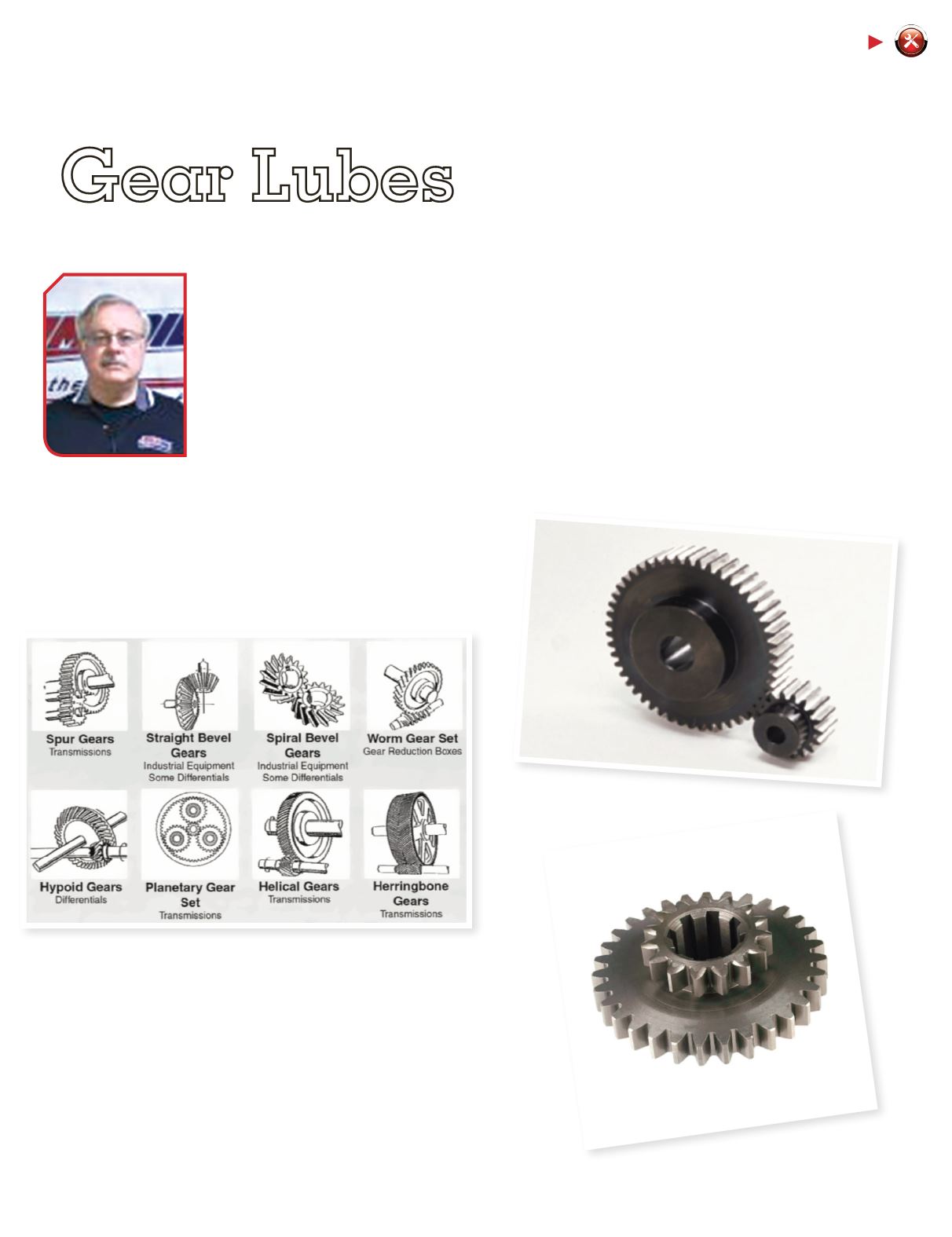
SPRING 2015 | MARINE TECHNICIANTODAY
15
A
s every boat owner or repair
technician knows, the horror of
hearing the outdrive grind to a halt
and seize is a gut-wrenching experience.
Not only can you be stranded, but you know
it is one of the most expensive repairs that
can be done on your boat. Outdrives are
truly a work of art with precision gears
and top of the line bearings. These gears
transfer tremendous power from the
engine to the prop and they are under
extreme load and many times at high RPM. At any moment the prop
can hit submerged objects that can transfer high shock loading in the
gear set. The most critical factor in the life of the gears and bearings
is the lubrication provided by the gear oil in the casing. In this article
I will explain the functions and properties of gear oils and how they
provide lubrication.
Figure 1
First, a little knowledge of gears is important to understanding the
nature of gear lubes. Refer to Figure 1 for this discussion. Gears
transmit motion and power from one rotating shaft to another rotating
shaft providing multiple applications of power transmission. There are
several types of gears and various geometric shapes for gears, but I am
only addressing basic applications. In Figure 1 Spur gears, Bevel gears
and Hypoid gears are displayed. Spur gears are simple gears with easy
meshing gear teeth transferring power between parallel shafts. Bevel
gears allow for intersecting shafts to transmit power. Hypoid gears are
designed to facilitate transferring power between non-intersecting
shafts at right angles. The important concept to grasp in these gear
sets is the action of contact and sliding motion. The Spur and Bevel
gears are engaging and rolling in motion, where the Pinion and Ring
gear in the Hypoid gears are contacting and sliding. This sliding
action allows the Hypoid gears to transmit greater power (the force is
distributed over the sliding area) providing for smaller differentials in
auto and truck applications.
By DanWatson
TECH TALK
Gear Lubes


